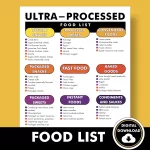Hey there! If you’ve been prescribed Tykerb (lapatinib) or you’re caring for someone who is, you’ve probably heard the word “interaction” tossed around a lot. What does it really mean for you day‑to‑day life? How can you enjoy the benefits of this powerful cancer medication while steering clear of nasty surprises? Let’s dive in together, break down the science into plain English, and give you a friendly cheat‑sheet you can actually use.
First things first: Tykerb can interact with a whole bunch of medicines, foods, and even a few supplements. Those interactions aren’t just trivia—they can affect how well the drug works, increase side‑effects, or, in rare cases, become dangerous. The good news? Most of the heavy‑lifting can be handled with a little awareness, a few timing tricks, and open conversation with your health‑care team. Ready? Let’s go!
Why Interactions Matter
Tykerb belongs to a class called HER2‑targeted tyrosine‑kinase inhibitors. It works by blocking a protein that cancer cells love to use for growth. That’s great news for tumor control, but it also means the drug rides on the same metabolic highways (mainly the liver enzyme CYP3A4) that many other medications travel.
According to the Drug Interaction Checker, there are 635 known drug interactions, 9 disease‑specific interactions, and 2 alcohol/food interactions. They break down into 123 major, 499 moderate, and 13 minor categories. Understanding where each falls helps you decide whether you need to avoid a combo entirely, adjust dosage, or simply keep an eye on it.
Think of it like a busy kitchen: if everyone tries to use the same stove at once, things get chaotic. By knowing who’s using which burner and when, you keep the meal (your treatment) moving smoothly.
Major Interactions
Major interactions are the “stop‑right‑there” alerts. They can make Tykerb levels sky‑high (risking toxicity) or drop them so low that the drug barely works. Below is a quick‑look table that captures the biggest culprits and what you can do about them.
| Category | Typical Interactors | Why It Matters | Management Tip |
|---|---|---|---|
| CYP3A4 Inhibitors (raise Tykerb) | Fluconazole, Itraconazole, Ketoconazole, Posaconazole | Slows breakdown → higher drug levels → rash, diarrhea, liver stress | Ask your doctor about dose reduction or avoid the inhibitor |
| CYP3A4 Inducers (lower Tykerb) | Rifampin, Rifabutin, Rifapentine, St. John’s wort | Speeds breakdown → lower drug levels → reduced cancer control | Consider an alternative antibiotic or herbal supplement |
| QT‑Prolonging / Cardiac Agents | Dronedarone, Cisapride, Pimozide, Thioridazine | Both can affect heart rhythm → risk of dangerous arrhythmias | Electrocardiogram monitoring; preferably avoid combo |
| Other Oncology‑Critical Drugs | Capecitabine (required combo), Paclitaxel (Abraxane), Everolimus (Afinitor) | Potential overlapping liver toxicity or skin reactions | Close lab monitoring; follow dosing schedule carefully |
| Hormonal / Endocrine Drugs | Digoxin, Carvedilol, Amlodipine | May alter heart rate or blood pressure when combined | Therapeutic drug monitoring, especially for digoxin |
When any of these show up on your prescription list, flag it. Your oncologist or pharmacist can often adjust the Tykerb dose or swap the offending medication for a safer alternative.
Moderate Interactions
These are the “watch‑and‑adjust” scenarios. They’re not immediate red‑lights, but they deserve a little extra attention.
- Antibiotics & antifungals – Drugs like clarithromycin, erythromycin, and voriconazole can push Tykerb levels up a notch. Keep an eye on liver enzymes and any new rash or diarrhea.
- Anticonvulsants – Carbamazepine, phenytoin, and phenobarbital tend to pull Tykerb down. If you need seizure control, discuss with a neurologist about possible dose tweaks.
- Antiretrovirals (HIV) – Some protease inhibitors (ritonavir) or NNRTIs (efavirenz) sit in the same metabolic lane. Coordination with your infectious‑disease specialist is key.
- Supplements & OTCs – High‑dose calcium/vitamin D, CoQ10, and fish oil can subtly affect absorption or bleeding risk. Simple solution: take them at least two hours apart from Tykerb.
- Other hormonal therapies – Dexamethasone, letrozole, anastrozole can add to skin or gastrointestinal side‑effects. Monitoring and symptom management (e.g., moisturizers for hand‑foot syndrome) help.
Remember, a moderate interaction isn’t a deal‑breaker—it’s just a reminder to stay in touch with your care team and perhaps schedule a few extra blood tests.
Minor Interactions
These are the low‑risk, “nice‑to‑know” notes. They rarely cause problems, but they’re worth a mention so you don’t wonder later why you felt a little odd.
- Common pain relievers like ibuprofen, naproxen, or acetaminophen are generally safe, but use the lowest effective dose.
- Antihistamines (diphenhydramine, loratadine) don’t clash with Tykerb, though they might add to drowsiness if you’re already fatigued.
- Herbal teas (except grapefruit) are fine, but keep a log of any “natural” products you sip.
Even minor interactions become significant when you combine several at once. A simple medication list (prescription, OTC, supplement) shared with every doctor you see keeps the whole picture clear.
Alcohol & Food
Two specific food‑related alerts pop up on the Tykerb label.
Alcohol
Tykerb and alcohol are a risky duo. Alcohol can amplify liver toxicity and make the diarrhea that many patients already experience even worse. The interaction is classified as moderate, so the safest route is to keep drinking to a minimum—think no more than one or two drinks per week, and avoid binge episodes.
Grapefruit & Meal Timing
Grapefruit juice is a notorious CYP3A4 inhibitor. Even a single glass can push Tykerb concentrations higher than intended. The rule of thumb? Skip the grapefruit entirely while you’re on Tykerb.
Tykerb also loves an empty stomach. The label says take it at least one hour before or after food. This timing helps the tablet dissolve consistently and avoids spikes in side‑effects. If you’re a “breakfast‑first” person, pop your pill with a glass of water, then wait an hour before breakfast—your future self will thank you.
Supplements
Below is a quick look at the most common supplement concerns.
| Supplement | Interaction Level | Practical Advice |
|---|---|---|
| Calcium/Vit D (high dose) | Minor‑to‑Moderate | Separate by ≥ 2 hours; avoid simultaneous intake |
| CoQ10 | Minor | Safe for most; monitor if you’re on anticoagulants |
| Fish Oil (Omega‑3) | Minor | Take apart from Tykerb; watch for extra bruising |
And a final note on St. John’s wort: it’s a strong CYP3A4 inducer, effectively knocking Tykerb’s power down. If you enjoy herbal remedies, leave this one out while on therapy.
Disease Interactions
Beyond drug‑to‑drug clashes, certain health conditions can magnify risks.
- Hepatic (liver) dysfunction – Since Tykerb is processed mainly in the liver, any pre‑existing liver disease can raise drug levels and cause toxicity. Regular liver‑function tests (LFTs) are a must.
- Hyper‑kalemia (high potassium) – Some diuretics used for blood‑pressure control can combine with Tykerb to push potassium up. Your labs will keep an eye on this.
- QT prolongation or arrhythmias – If you already have a heart rhythm issue, adding Tykerb plus a QT‑prolonging drug could be a double‑hit. An ECG before starting, and possibly during treatment, is advised.
All of these disease interactions underscore why routine check‑ups (blood work, ECGs) are woven into the Tykerb treatment plan.
Side Effects Linked to Interactions
Tykerb’s own side‑effect profile includes diarrhea, rash, hand‑foot skin reaction, nausea, and fatigue. Interactions can make any of these feel more intense.
- Diarrhea – Antibiotics like clindamycin, laxatives, or even high‑dose calcium can aggravate it. Hydration, BRAT diet (bananas, rice, applesauce, toast), and antidiarrheal meds prescribed by your doctor help.
- Rash / Skin reactions – Adding another EGFR inhibitor, certain photosensitizing drugs, or even sun exposure can raise the odds. Wear sunscreen, loose cotton clothing, and report any new rash promptly.
- Fatigue – Some antidepressants (e.g., sertraline) may intensify drowsiness. If you’re already feeling wiped, discuss dosage timing with your prescriber.
Knowing which interactions worsen which side‑effects empowers you to anticipate, prevent, and treat them before they become a roadblock.
Safety Checklist
Here’s a printable‑friendly, friend‑to‑friend list you can stick on your fridge or keep in your phone notes.
- Take 1250 mg Tykerb once daily on an empty stomach (≥ 1 hour before or after meals).
- Never split, crush, or chew the tablet.
- Avoid grapefruit juice completely.
- Limit alcohol to no more than two drinks per week; skip binge sessions.
- Separate calcium/vitamin D, CoQ10, and fish oil by at least two hours from your dose.
- Keep a running list of all prescription meds, OTCs, and supplements—share it with every doctor, pharmacist, and caregiver.
- Schedule regular labs: liver function, electrolytes, and an ECG if you have heart‑ rhythm concerns.
- Report any new symptoms—especially yellowing skin/eyes, severe diarrhea, or unexplained swelling.
- Use the Drug Interaction Checker before adding any new medication.
Tip: Print this out, tape it to your pill bottle, and treat it like a tiny contract with yourself to stay safe.
Final Thoughts
Navigating Tykerb drug interactions can feel like walking through a maze, but you don’t have to wander alone. By understanding the major, moderate, and minor players, watching your alcohol and food choices, and keeping a solid communication loop with your health‑care team, you give yourself the best shot at harnessing Tykerb’s benefits while minimizing the bumps.
Remember, the goal isn’t fear—it’s empowerment. You’re already doing the hard work by asking questions and reading up. Keep that curiosity alive, keep your medication list up to date, and don’t hesitate to reach out to your oncologist, pharmacist, or a trusted support group when anything feels out of balance.
What’s your experience with Tykerb and other meds? Have you found a timing trick that works wonders, or a supplement that you had to ditch? Share your story in the comments below—your insight could be the exact piece of the puzzle another reader needs.
Stay strong, stay informed, and keep moving forward. You’ve got this.


















Leave a Reply
You must be logged in to post a comment.